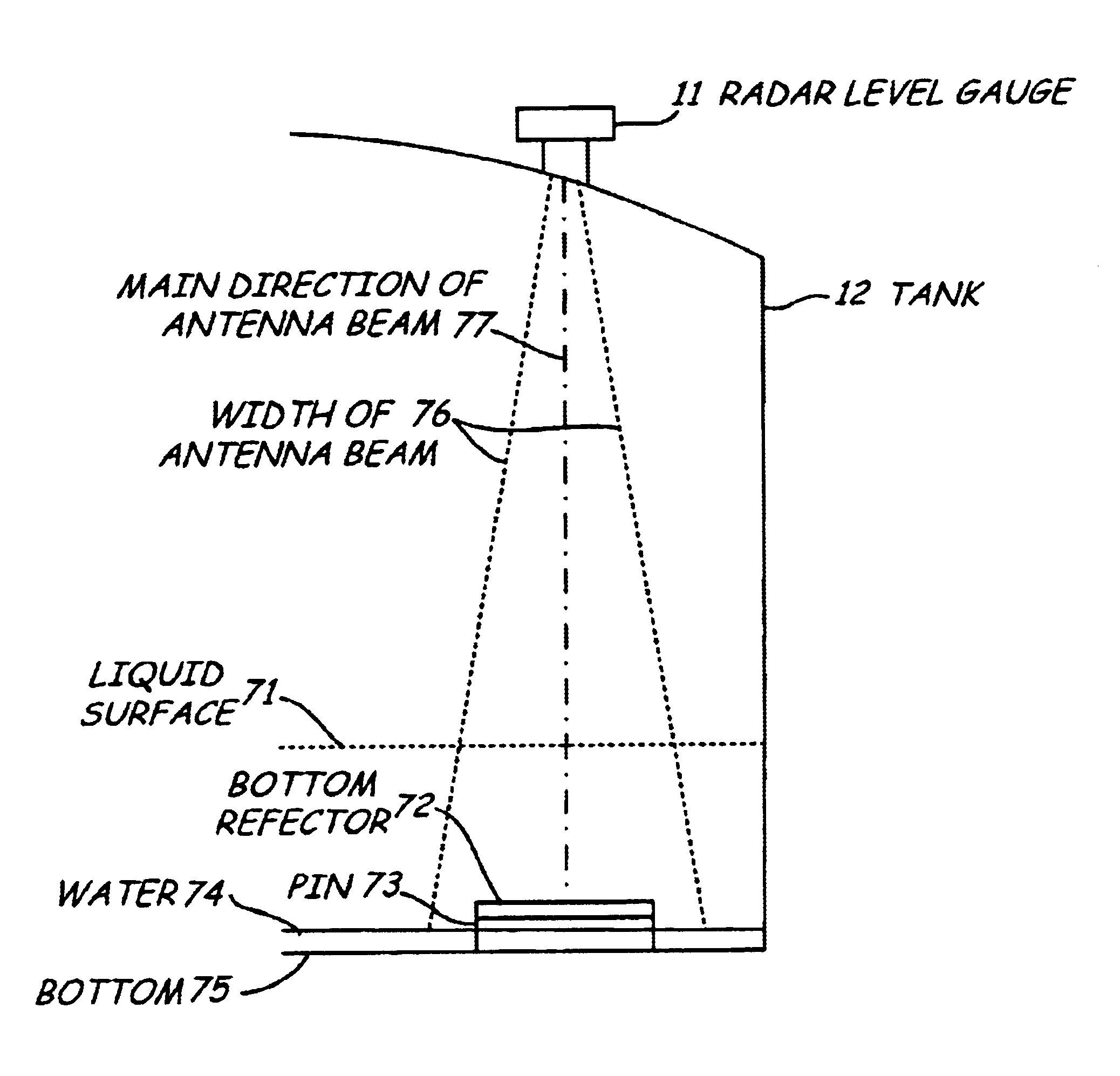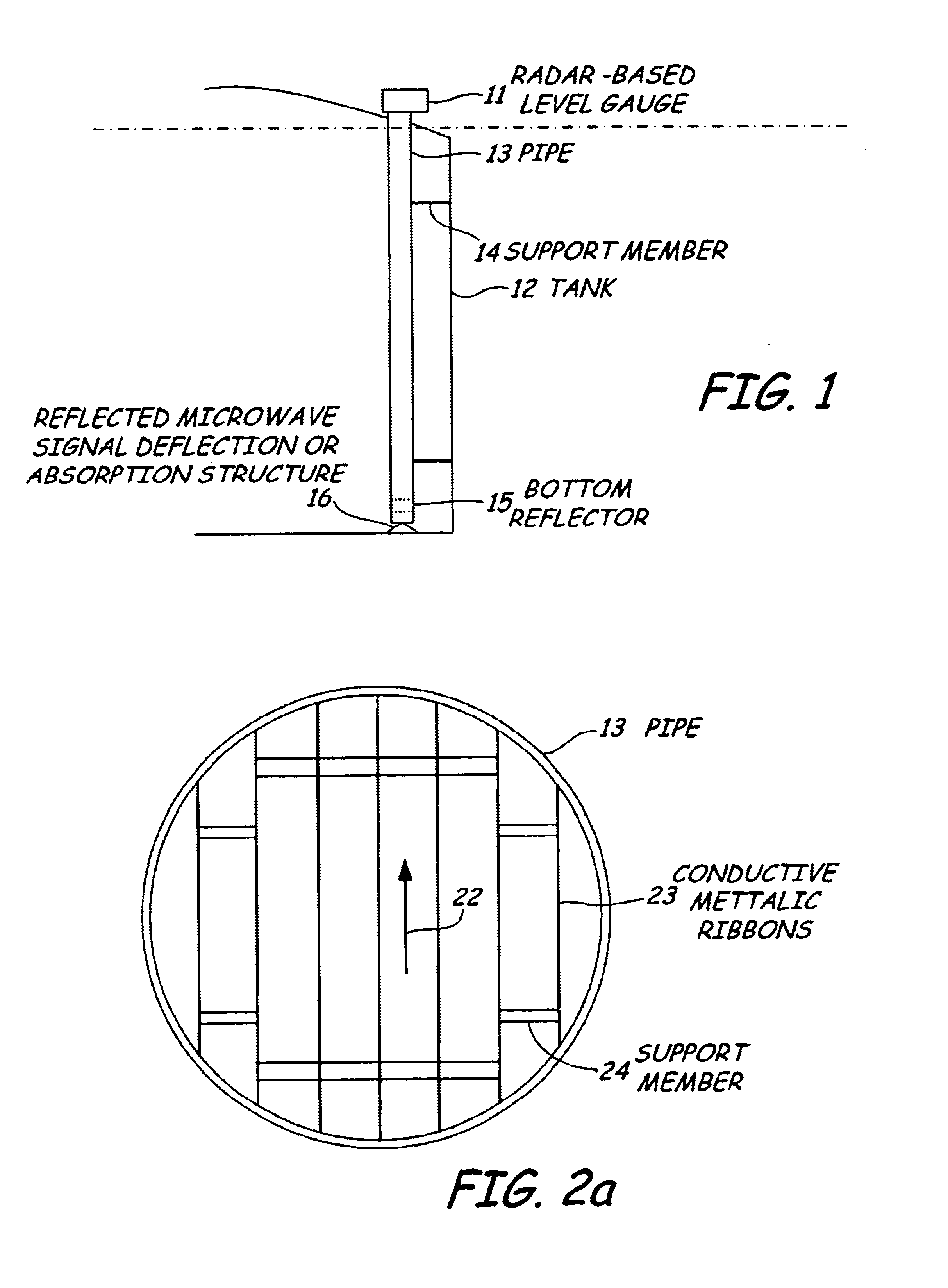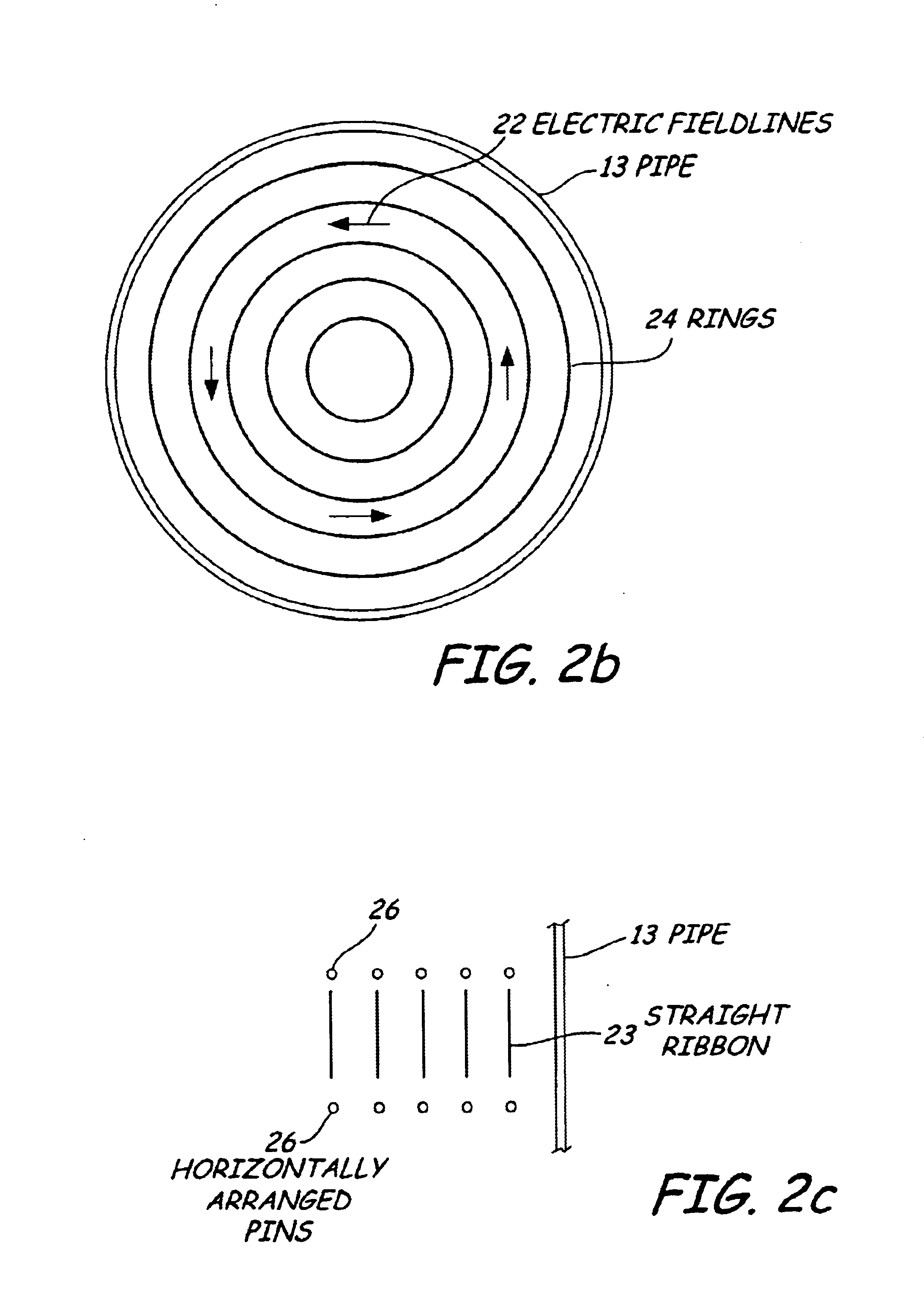Bottom reflector for a radar-based level gauge
a radar-based level gauge and reflector technology, which is applied in the direction of engine lubrication, liquid/fluent solid measurement, reradiation, etc., can solve the problems of insufficient distance resolution to distinguish the microwaves reflected from the bottom of the tank, interference with microwaves, and disturbance of measuremen
- Summary
- Abstract
- Description
- Claims
- Application Information
AI Technical Summary
Benefits of technology
Problems solved by technology
Method used
Image
Examples
Embodiment Construction
With reference to FIG. 1, which schematically illustrates, in a side view, an apparatus aimed for radar-based level gauging, a preferred embodiment of the present invention will be described. The apparatus may be a frequency modulated continuous wave (FMCW) radar apparatus, a pulsed radar apparatus, or any other type of distance measuring radar.
Many frequencies can be used for radar level gauging but bands close to 5.8, 10 and 25 GHz have been used extensively. In tanks where foam and contamination are frequent the lowest one of said frequencies is most common since the microwave signal at this frequency is much less sensitive for such degradations.
The radar-based level gauge, denoted by 11 in FIG. 1, is mounted above an opening of a roof of a tank or container 12 filled with a liquid, the level of which being to be gauged. Preferably, the liquid is an oil product such as e.g. crude oil, a liquid petroleum gas (LPG), or a liquid natural gas (LNG). Such products have typically a diel...
PUM
 Login to View More
Login to View More Abstract
Description
Claims
Application Information
 Login to View More
Login to View More - R&D
- Intellectual Property
- Life Sciences
- Materials
- Tech Scout
- Unparalleled Data Quality
- Higher Quality Content
- 60% Fewer Hallucinations
Browse by: Latest US Patents, China's latest patents, Technical Efficacy Thesaurus, Application Domain, Technology Topic, Popular Technical Reports.
© 2025 PatSnap. All rights reserved.Legal|Privacy policy|Modern Slavery Act Transparency Statement|Sitemap|About US| Contact US: help@patsnap.com



